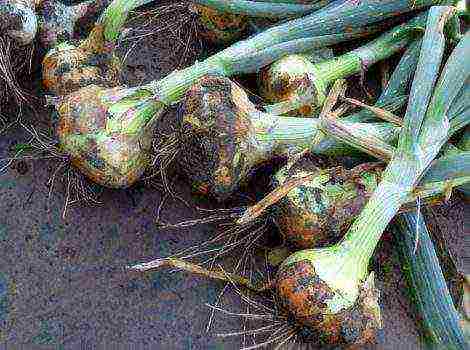Content [show]
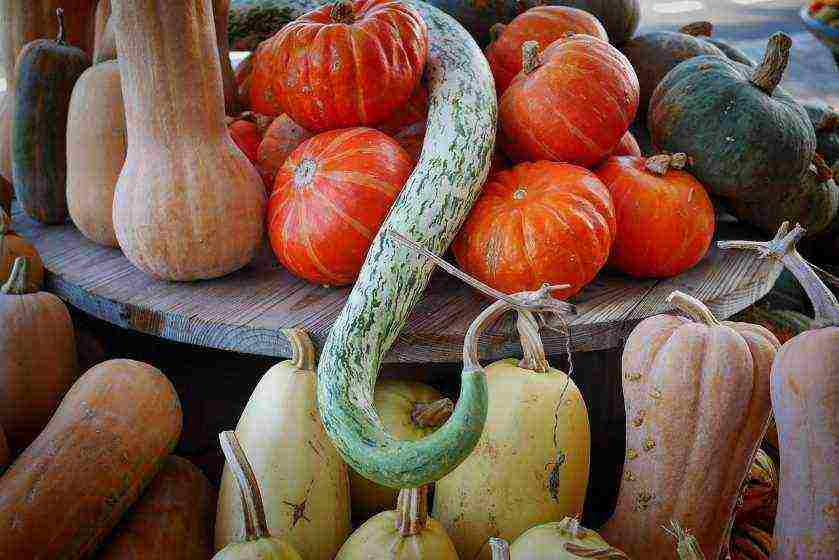
We invite you to familiarize yourself with the description of the most popular pumpkin varieties. Probably, there are no summer cottages in Russia where the pumpkin grows. Its history goes back many centuries. It is known that pumpkin was used by the inhabitants of the Mayan tribe, knowing about its healing properties. This vegetable has a great advantage among all the others - it can be stored for a long time, and you can eat not only juicy pulp, but also the most useful seed for food.
General information and classification
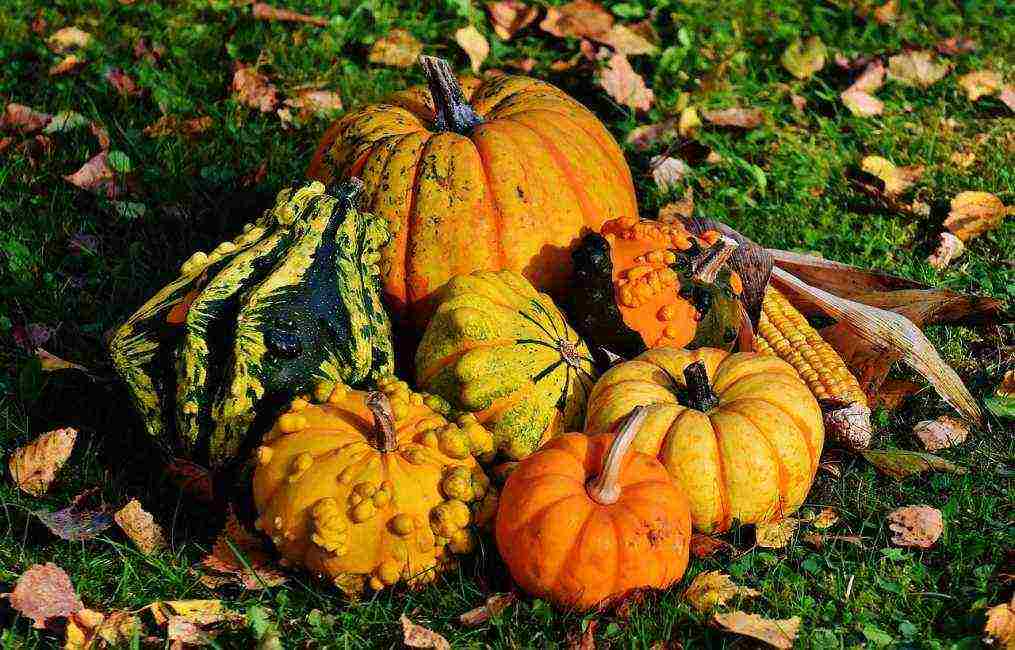
Decorative varieties
The pumpkin family includes 27 species. A huge number of varieties have been bred from each.
In our country, 3 types of pumpkin are most often grown:
- large-fruited
- nutmeg
- ambulance
By purpose, pumpkins are divided into:
- table varieties
- fodder
- decorative
We will describe different varieties for cultivation in different regions of Russia, taste, etc.
Butternut squash

Butternut squash
Spanish guitar
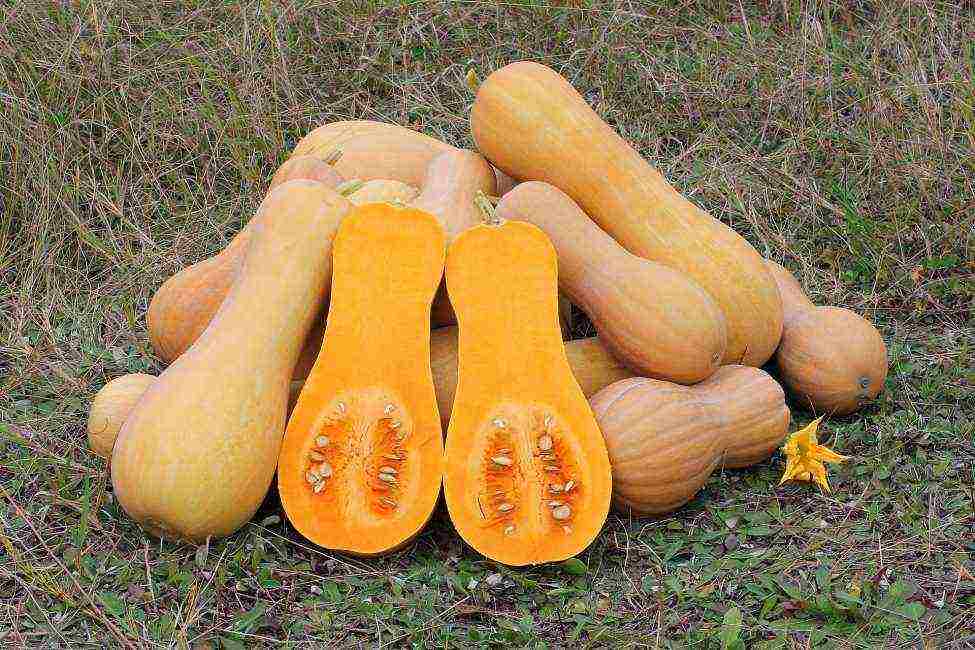
Spanish guitar
Candied
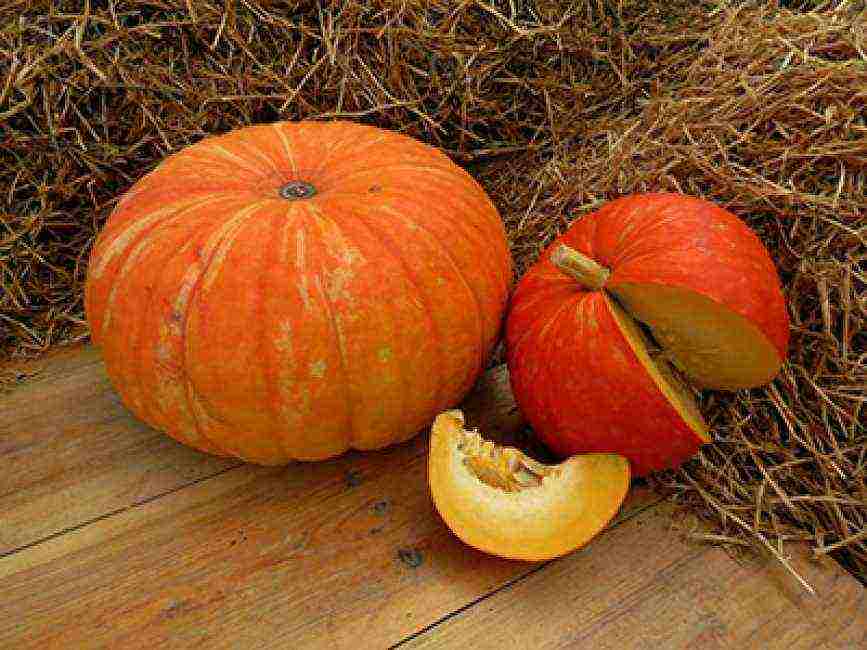
Candied
Vitamin
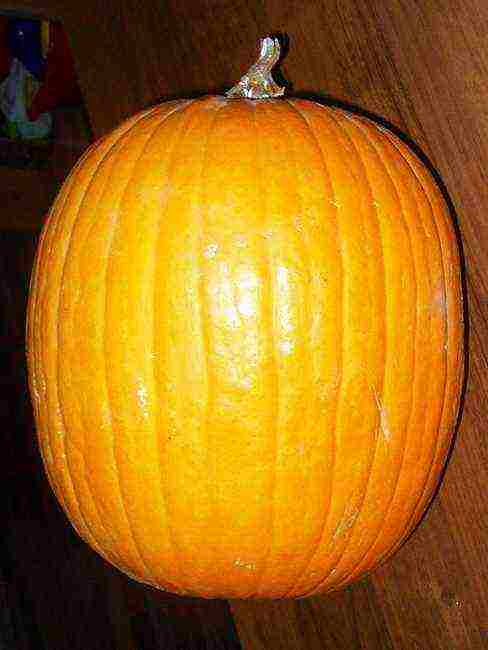
Vitamin
Marble
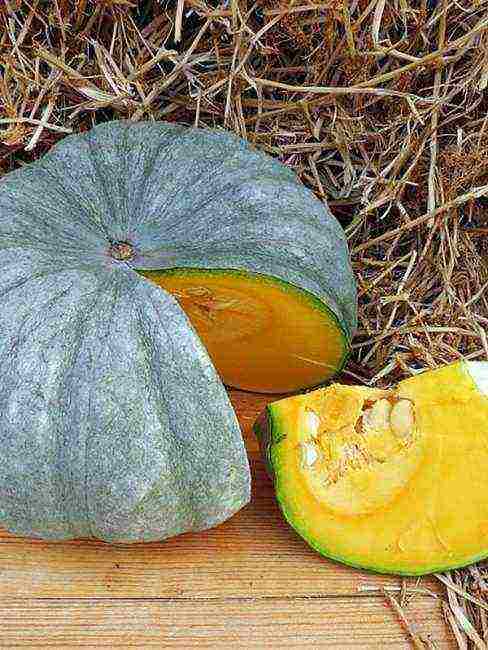
Marble
Muscat de provence
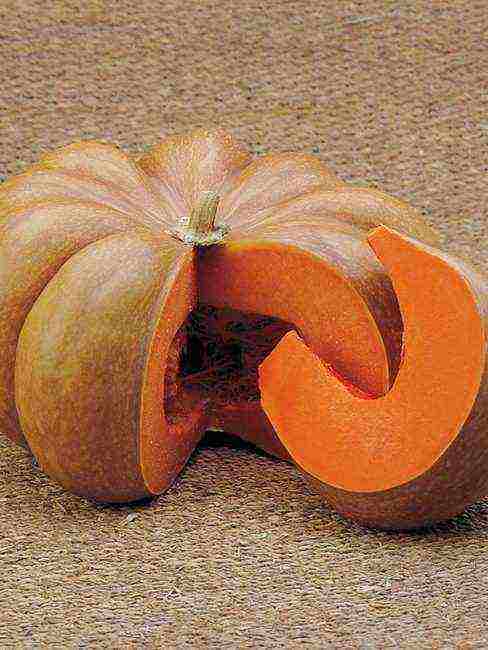
Muscat de provence
Nut
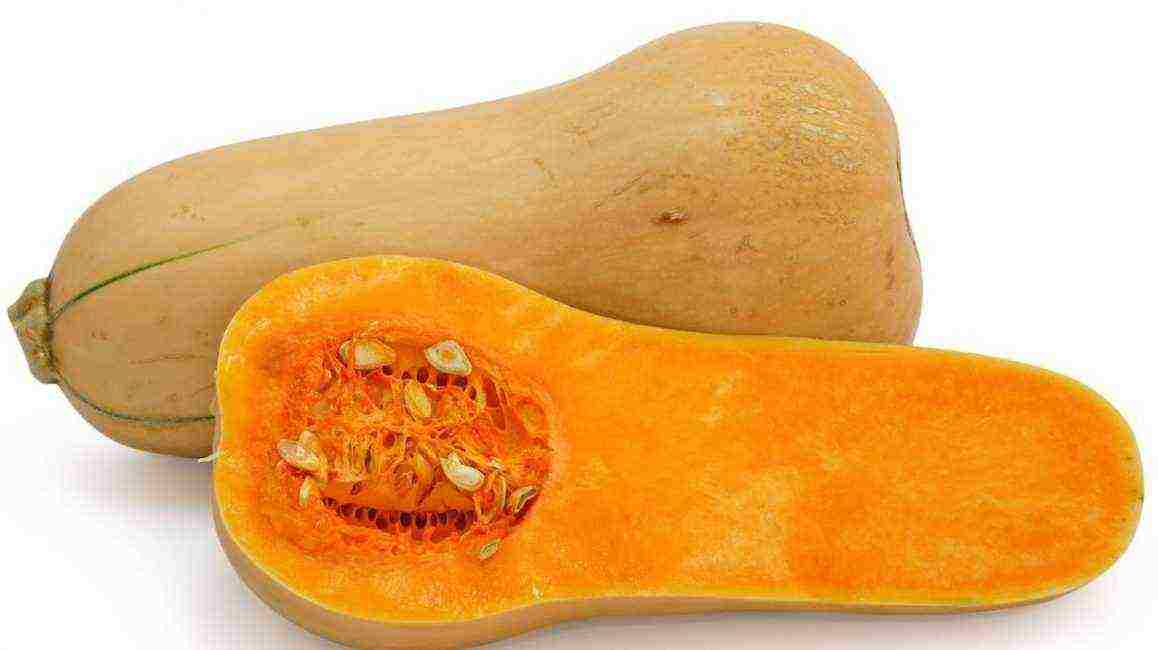
Nut
Varieties with large fruits
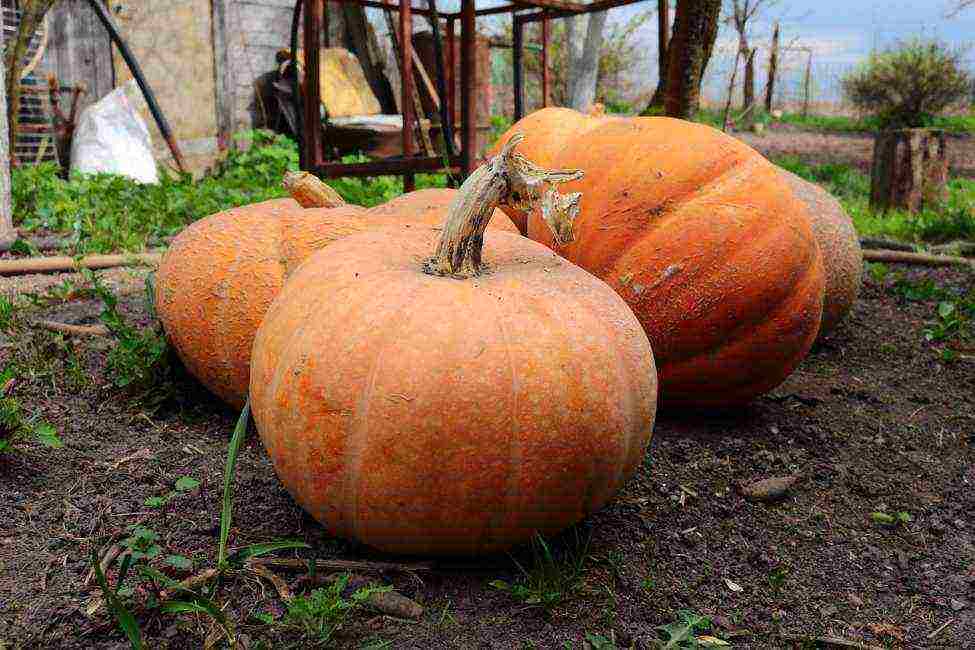
Harvested crop
Pumpkin lantern

Pumpkin lantern
Russian porridge
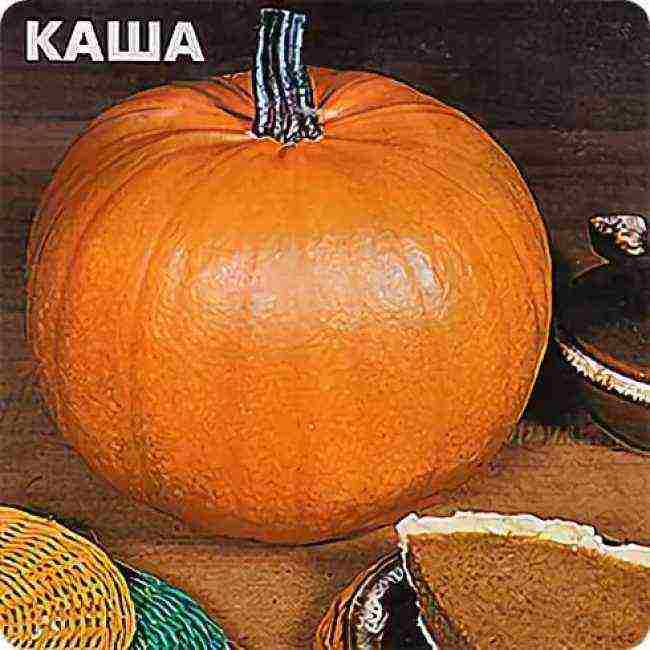
Russian porridge
Varieties of hard-barked pumpkin
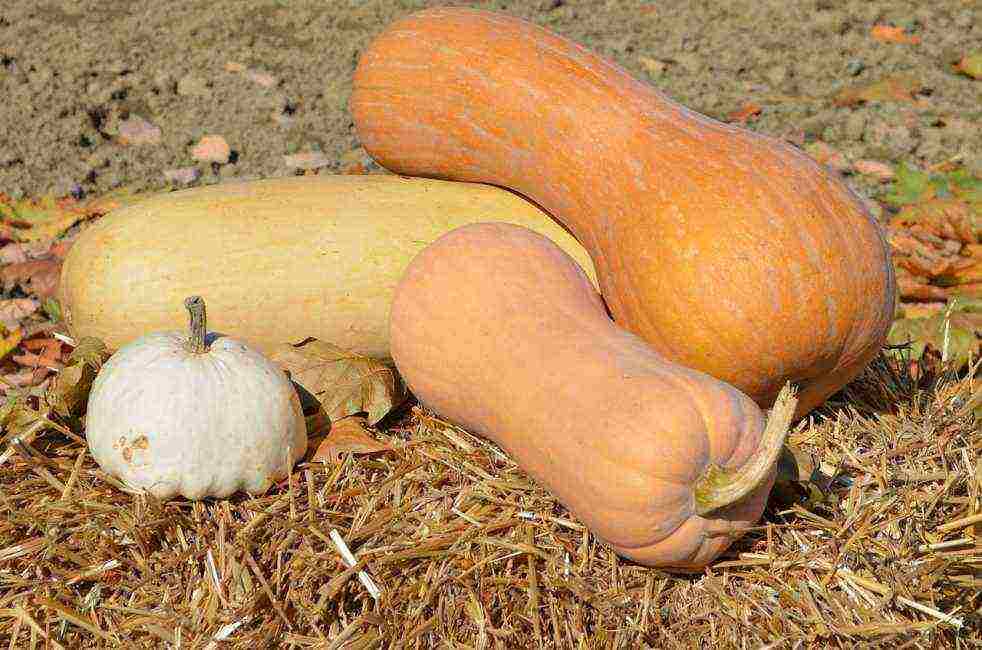
Zucchini, squash also belong to this group.
Bun
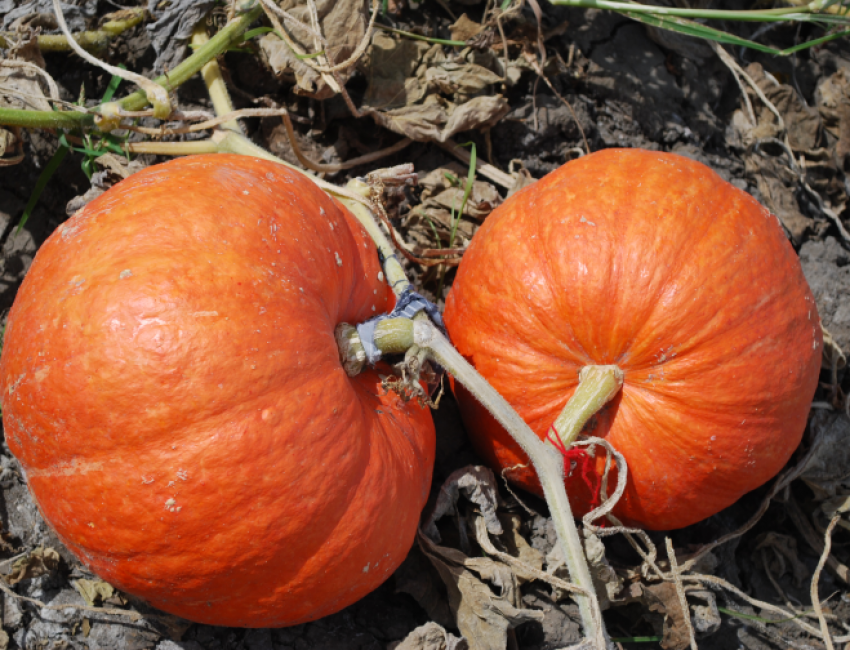
Bun
Gymnosperms

Gymnosperms
The most famous varieties of gymnosperms are:
- Danae
- Olga
- Miranda
- Hamlet
- Gymnosperm 14
Varieties for the Moscow region

Moscow suburbs
Chit
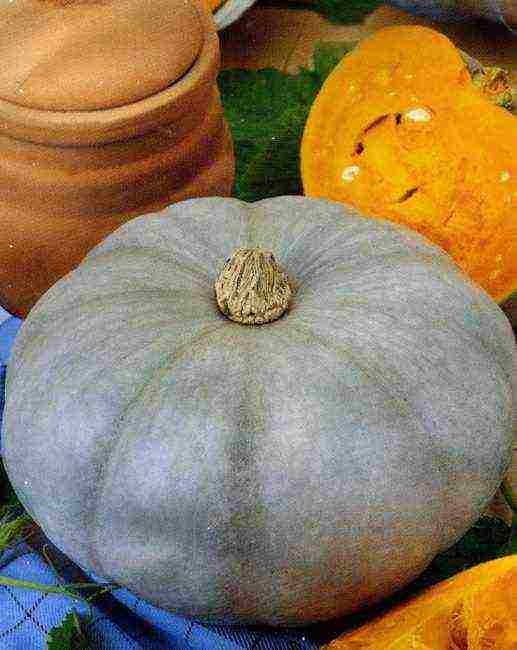
Chit
Sweet pie
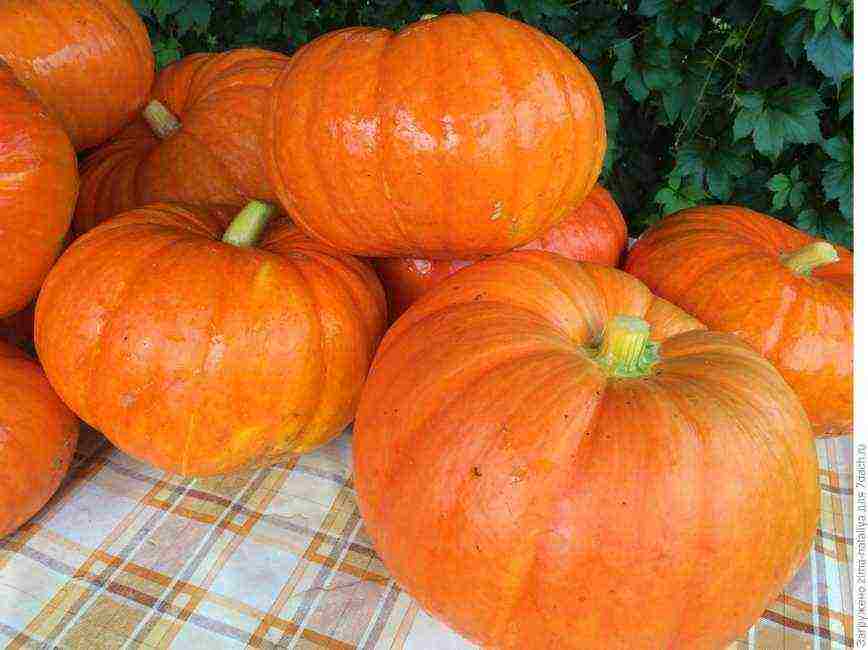
Sweet pie
Melon
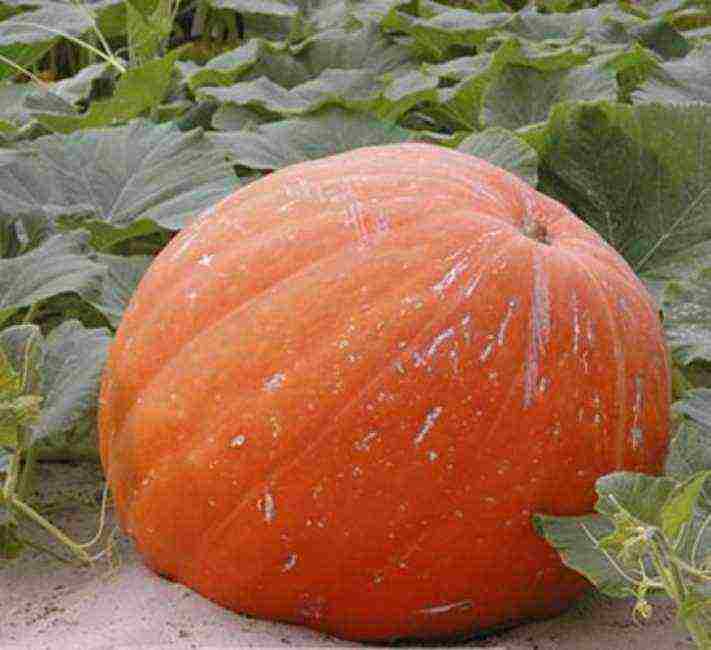
Melon
Champagne pastille
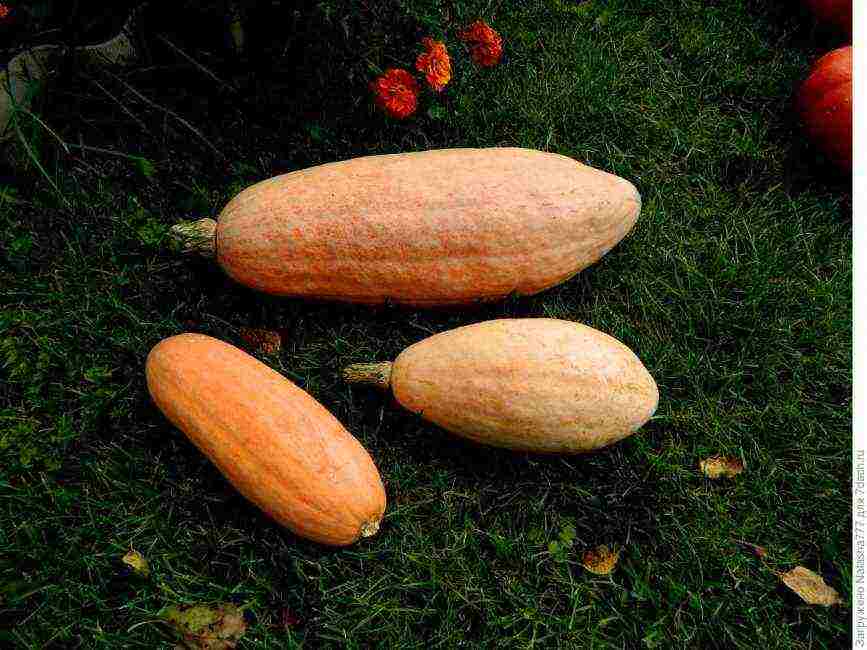
Champagne pastille
Dawn
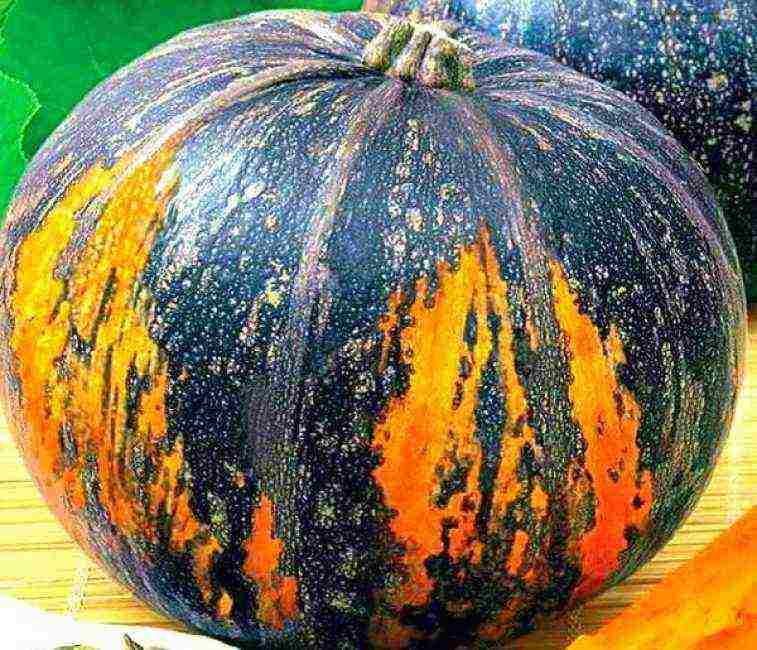
Dawn
The variety is considered resistant to various diseases:
- fusarium
- anthracnose
- powdery mildew
- rot
Almond

Almond
Russian woman
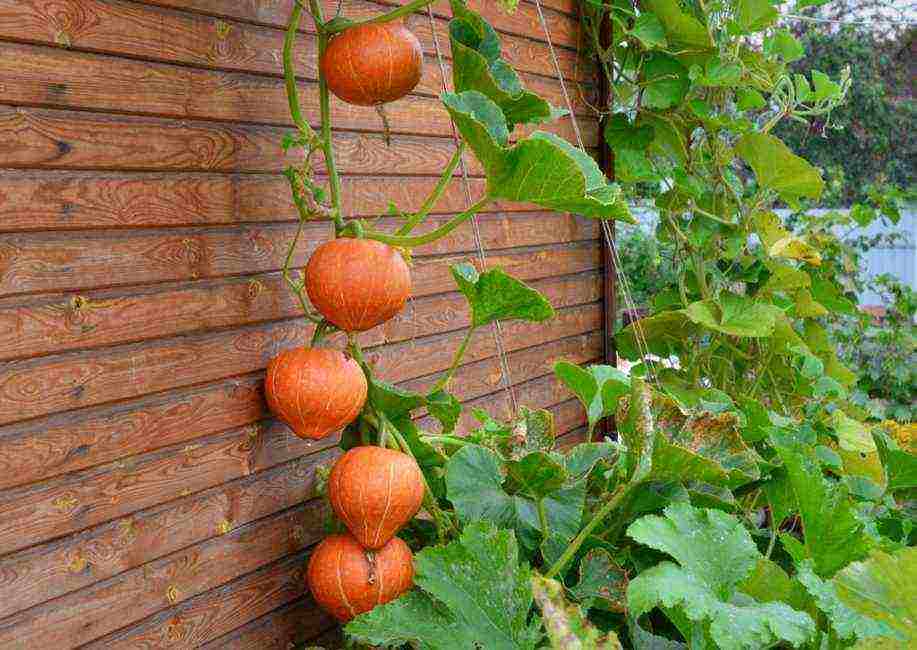
Russian woman
Varieties for Siberia, the Urals
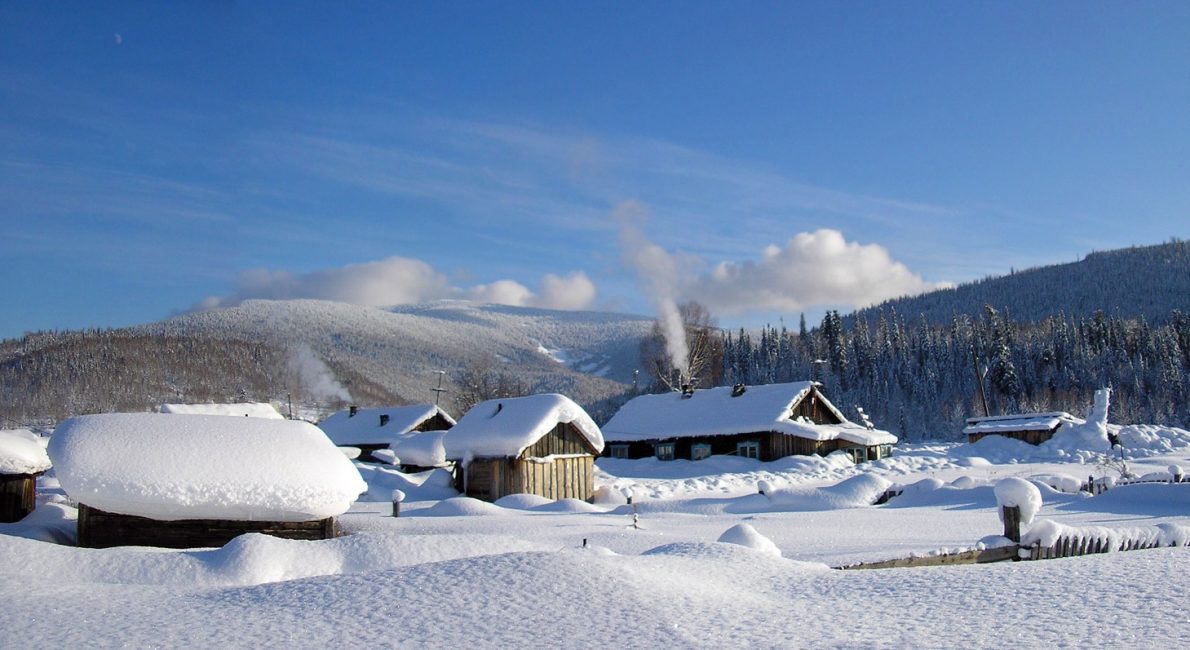
Siberian winter
Let's consider some varieties suitable for these regions of the country:
Therapeutic

Therapeutic
The plant is not resistant to:
- decay
- anthroknose
- powdery mildew
Pearl

Pearl
Smile
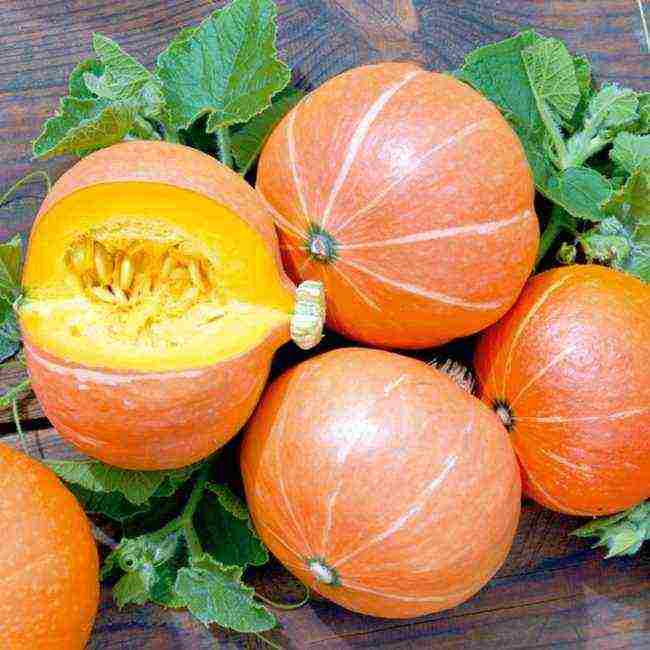
Smile
Also in the Urals, Siberia, you can grow varieties:
- vitamin
- Russian woman
- sweetie
- marble
- almond
- winter dining room, etc.
Sweet varieties
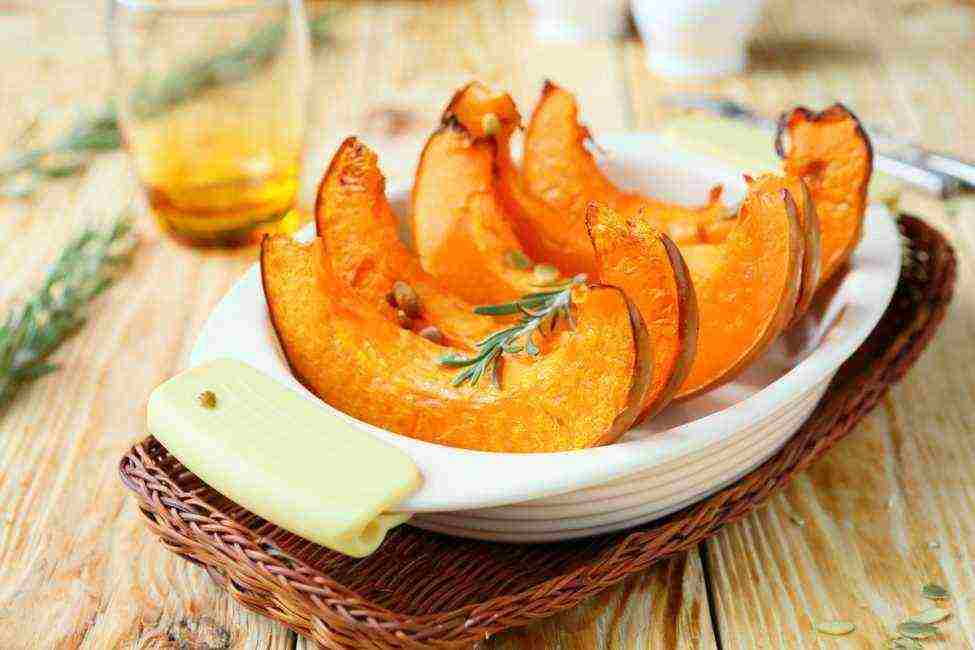
Baked Sweet Pumpkin
Consider some of the varieties included in this group:
Winter sweet

Winter sweet
The variety is considered:
- transportable
- drought tolerant
- suitable for long-term storage - up to 1 year
- resistant to the most famous diseases of pumpkin seeds - anthracnose, powdery mildew
Sweetheart
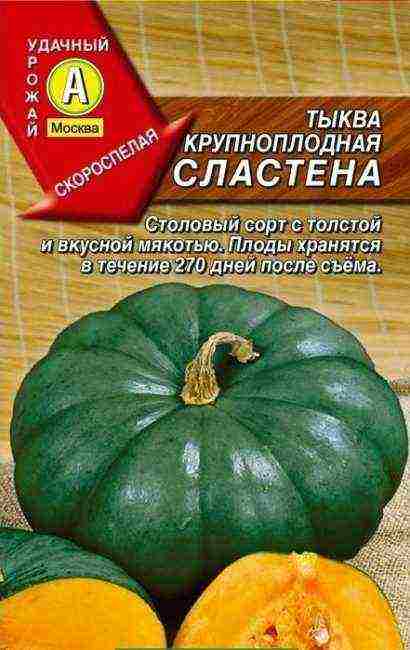
Sweetheart
Gray Volga

Gray Volga
The seed nest takes up a significant part of the fruit. The variety is considered:
- transportable
- high-yielding
- drought tolerant
Honey
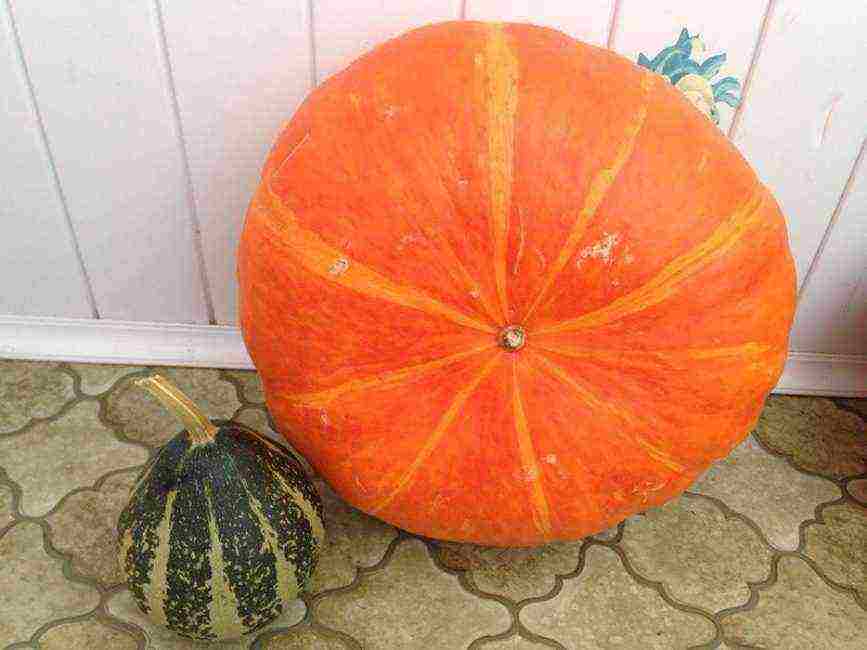
Honey
Honey pumpkin brings together many varieties. The most famous:
- honey tale (princess)
- honey beauty
- honey dessert
Sweetie

Sweetie
Hybrid varieties
Hybrid pumpkins
Let's describe several pumpkin hybrids:
Blush F1
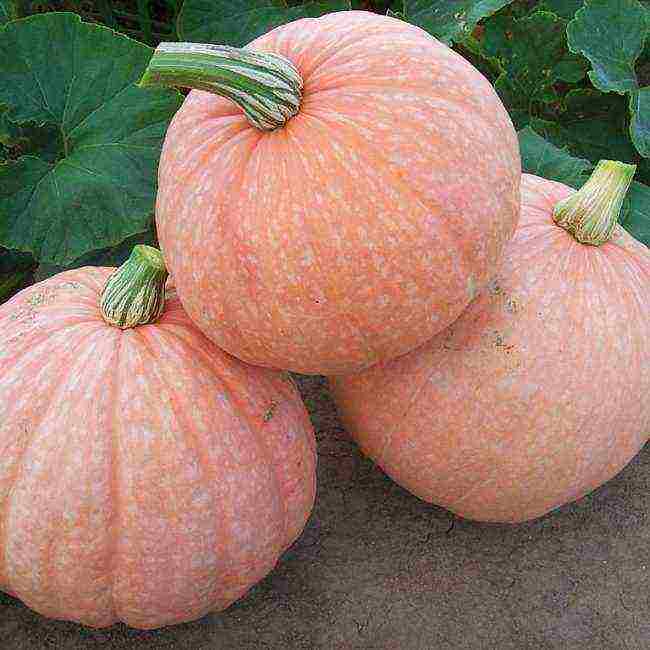
Blush F1
Matilda F1
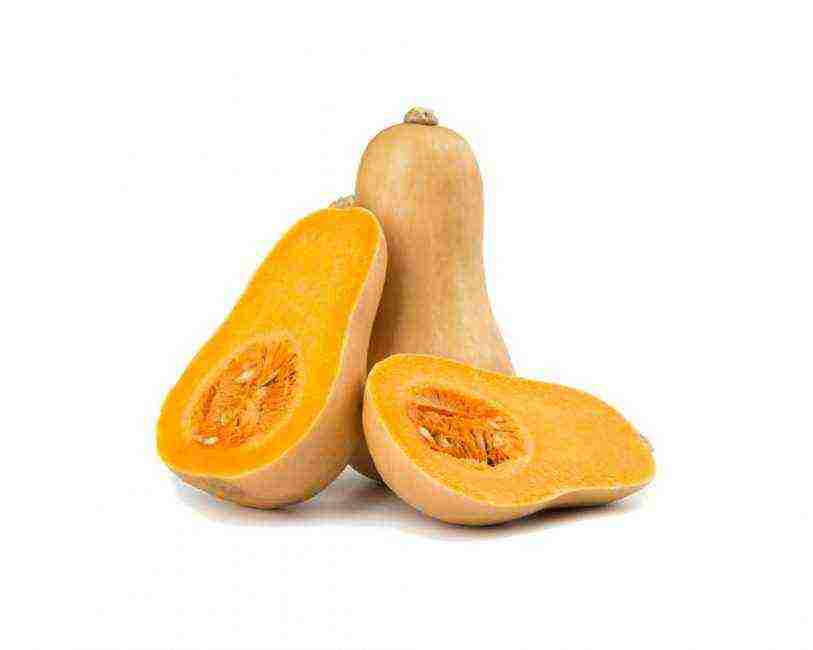
Matilda F1
The seed nest occupies a small part of the pumpkin. The palatability of the pulp allows it to be used for various purposes:
- for salads
- baking
- stewing, baking, etc.
Butter crumpet F1
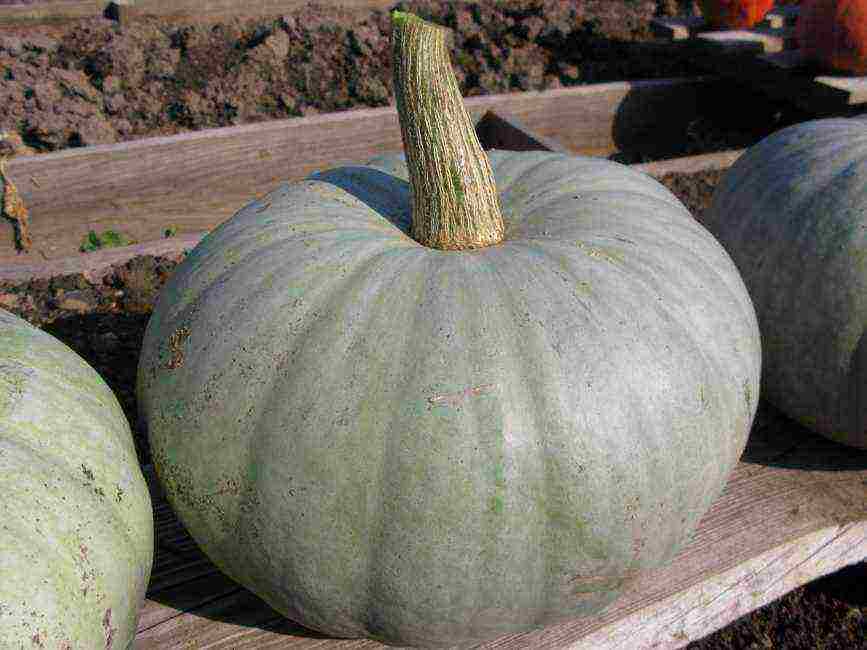
Butter crumpet F1
Hazelnut F1
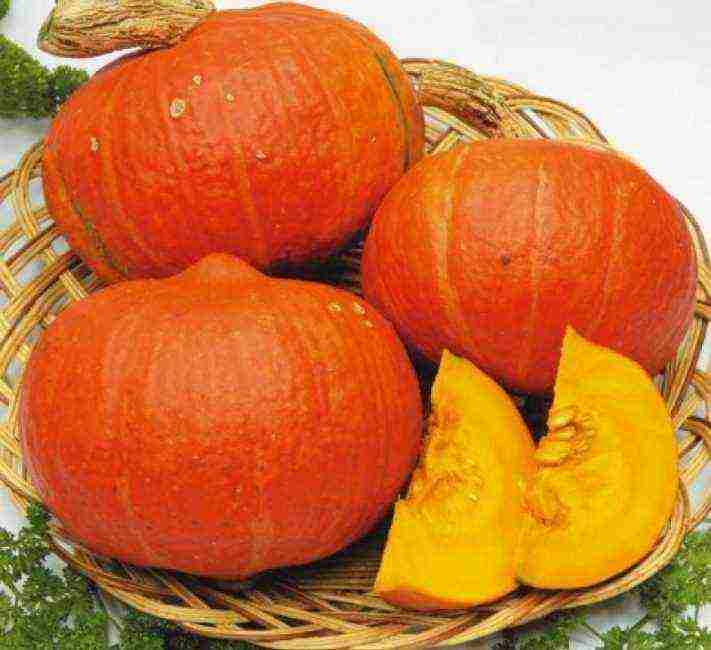
Hazelnut F1
When choosing a variety, you must consider:
- area where the plant will be grown
- purpose: for storage, as animal feed, etc.
- palatability: for desserts, stewing, canning, etc.
8.7 Overall Score
From childhood, every inhabitant of our country knows that pumpkin is one of the most useful vegetables. It is used as a dietary product and is included in the diet of babies. There are many varieties in the world. Each of them has its own positive, negative qualities. We have described the best and most popular pumpkin varieties for you. If you disagree with these ratings, leave your rating in the comments with the reasons for your choice. Thank you for your participation. Your opinion will be useful to other users.
8.9 Editor's rating
Relevance of information
Availability of application
8.5
Reliability of information
9.5
8.5 User rating
Relevance of information
Availability of application
Reliability of information
Add your review | Read reviews and comments
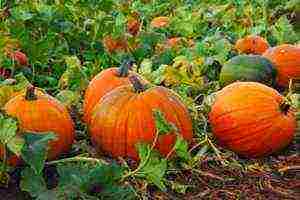 Choosing the best pumpkin varieties today is not an easy task. More than a hundred varieties of pumpkin have been bred by breeders. Each species has its own advantages and weaknesses. Pumpkin varieties are adapted for different regions of the country, are demanding in different ways to climatic conditions and have different taste qualities. We will analyze the strengths and weaknesses of the most common varieties and select the best pumpkin varieties according to several indicators.
Choosing the best pumpkin varieties today is not an easy task. More than a hundred varieties of pumpkin have been bred by breeders. Each species has its own advantages and weaknesses. Pumpkin varieties are adapted for different regions of the country, are demanding in different ways to climatic conditions and have different taste qualities. We will analyze the strengths and weaknesses of the most common varieties and select the best pumpkin varieties according to several indicators.
The main varieties of pumpkin
To understand the variety of varieties that exist today, you need to know their types. They are usually divided into four groups:
- Muscat varieties... These are the varieties that have a reputation for being the tastiest, but they are the most sensitive to heat. In the conditions of our country, such varieties simply do not have time to ripen if grown from seeds. But growing from seedlings gives a satisfactory harvest. Butternut squash seeds are brown, sometimes with a yellow tint.
- Large-fruited varieties... The sweetest pumpkin is large-fruited. The seeds of such a pumpkin are white and very tasty. Such a pumpkin is well stored, but takes up a lot of space, and its fruits are heavy. This makes it difficult to transport the crop, so summer residents who do not have personal transport often choose varieties not from this group.
- Hard varieties... This group includes not only pumpkins, but also squash and squash. The fruits of this group are small, they grow well in temperate climates and ripen quickly. By the end of August-September, the fruits of these pumpkins are ready for consumption. They are also appreciated for the fact that a medium-sized pumpkin is convenient for harvesting, transporting and storing crops. Her seeds are creamy and very tasty.
- Decorative varieties... The fruits of this type are not used for food because of the bitter pulp. But hard, well-dried fruits are used in the manufacture of various crafts, and pumpkin whips with velvety dark green leaves and bright large flowers serve as an excellent decoration for the estate.
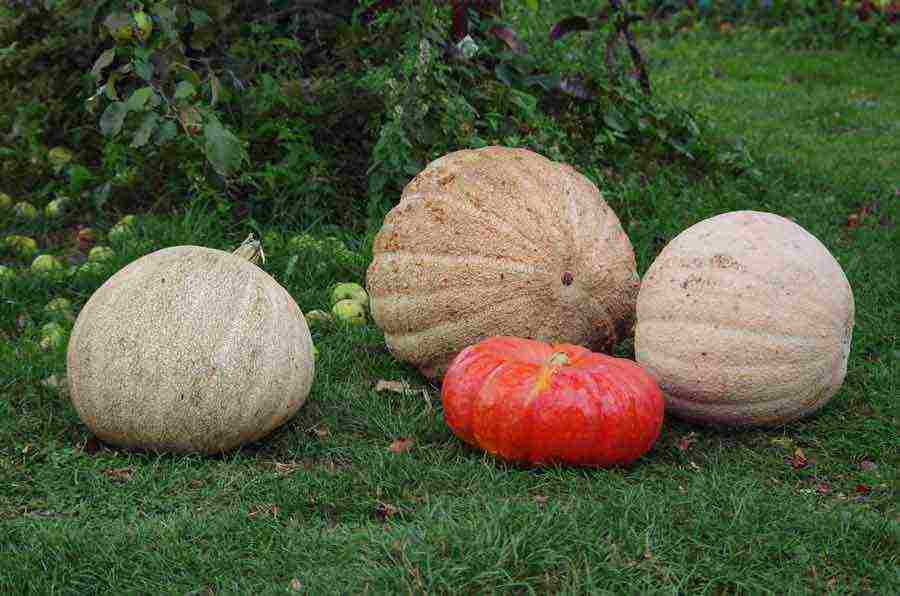
Butternut squash
The sweetest pumpkin
In many ways, the taste of pumpkin is determined by its sweetness. The sugar content in a vegetable depends on many factors: the quality of the soil, the number of sunny days during ripening, watering, and many other factors. Still, the most important factor here is the quality of the variety. The sweetest pumpkin varieties belong to the group of large-fruited varieties. Here are the names most beloved by gardeners in our country:
- One hundred pound - this variety enjoys long-deserved fame. The plant has long, strong lashes and large fruits.The fruit can reach 120 kg, but most often its weight is from 7 to 10 kg. The flesh of this pumpkin is loose, yellow with an orange tint. Hundred-pound sugar does not accumulate very much, so the species is used as fodder. But her resistance to disease is very high.
- Marble - a variety, the fruits of which are medium-sized (about 4 kg), and the whips are long. The skin of the fruit is gray, gray-green or green with specks or streaks of a lighter shade. The fruits are flattened. The pumpkin pulp is orange, bright, crunchy when raw and very sweet in taste. But even in baked form, Marble pumpkin does not disappoint. Her yield is high. Fruits are well kept, are not prone to decay.
- Variety Smile suitable for gardeners who cannot allocate a large area for a vegetable. The plant was originally bred by breeders as an ornamental plant, but after improving varietal qualities, the taste of the fruit also improved significantly. A smile refers to early varieties, the harvest ripens in 3 months. The yield is high, about 10 pumpkins per root. The size of the pumpkin is small (about 2 kg). Pumpkins are flattened in shape, have a bright orange color with white stripes. They are very decorative. The pulp is orange, sweet, with a melon smell. Fruits can be stored in an apartment for up to 160 days.
- Sweetie - mid-season species with small pumpkins (1-2 kg) of a bright orange or almost red hue. One plant produces many pumpkins that mature in 116-120 days. The pulp is rich in ascorbic acid and is one of the sweetest. The plant is frost resistant.
- Atlant... Unlike the previous variety, Atlant is a giant even by the standards of large-fruited pumpkins. The average weight of the fetus is about 20 kg, and records are up to 70 kg! Pumpkins are orange in color, oblong in shape with a small but pronounced division into segments. Pumpkin pulp Atlant is tender and sweet in taste. The species is resistant to disease, and its fruits almost do not rot during storage.
- Melon... Melon pumpkin got its name for its aroma, similar to the smell of melon. Rounded large orange fruits can reach up to 30 kg by weight. Its good taste makes it optimal for use in baby food and for making juices. Other advantages are productivity, unpretentiousness, resistance to rot during storage.

Marble pumpkin
Butternut squash
Butternut pumpkin came from South America, but has firmly won back its place in the gardens of our country thanks to its delicious pulp, rich in vitamins and microelements. Muscat fruits are great for making crafts. For example, the famous symbol of the Halloween holiday, tradition says to make it from the butternut pumpkin.
The most famous and common types of the nutmeg group include:
- Golden pear... The vegetable got its name for the unusual shape of pumpkins, resembling a drop. This variety is relatively new, but it has already won the recognition of gardeners. Small (up to 2 kg) fruits ripen in about 3 months. Due to its small size, the Golden Pear is easy to collect and store, and its resistance to diseases makes it easy to grow this plant. The pulp of the fruit is sweet, with a nutty taste. The dense juicy pulp can be eaten both raw and baked.
- Arbatskaya... If the previous variety is a novelty, then Arbat pumpkin is a choice that has stood the test of time. The pumpkin is pear-shaped, elongated, yellow with an orange tint. The fruits ripen quite late, they can reach up to 20 kg in weight. The crop can be stored well and is suitable for both food and livestock feed.
- Vitamin... Late variety with large pinkish-brown oval pumpkins covered with greenish spots. The plant is vigorous, each root yields 4-5 long, thick lashes. The flesh is almost red. It contains a lot of carotene and is very sweet. The crop is well stored without requiring special conditions.
- Prikubanskaya... An old, well-proven species with well-developed agricultural technology.Fruits are relatively small (2-3 kg), pear-shaped, divided into segments by shallow grooves. The advantages of the vegetable are stable yield, resistance to decay, tasty, juicy pulp of a bright orange hue.
- Butternut - perhaps the most classic representative of the nutmeg varietal group. For a bright, pronounced flavor of a nut in the pulp, this species is also called nutmeg or nutmeg. The plant has long, highly branching lashes. Small pumpkins resemble an elongated pear in structure. The skin of the fruit is brown in color and the flesh is bright orange, fibrous, oily to the touch and tastes very good. The crop ripens rather late. No cellar required for storage.

Butternut variety
Something about unusual varieties ...
Of course, the classic varieties are a reliable, time-tested choice that guarantees a good harvest. But a good gardener is always an experimenter by nature, looking for something new and not dwelling on previous successes. For exotic lovers, pumpkin is an excellent and very grateful object. Russian and foreign breeders have created and introduced into practice unusual types of vegetables.
Mirani di Chioggia - a variety of butternut pumpkin, which appeared on Italian soil, but recently - in domestic gardens. The plant looks very unusual thanks to the flattened bluish-green fruits sitting on long thick stalks. The surface of the fruit is divided into segments and covered with numerous tubercles. The cut of the fruit looks very decorative due to the contrast of the bluish-green skin with the yellow-orange color of the flesh. The seed nest is small, the flesh is dry, firm and sweet. The pumpkin crop of this variety can be stored for up to 6 months!
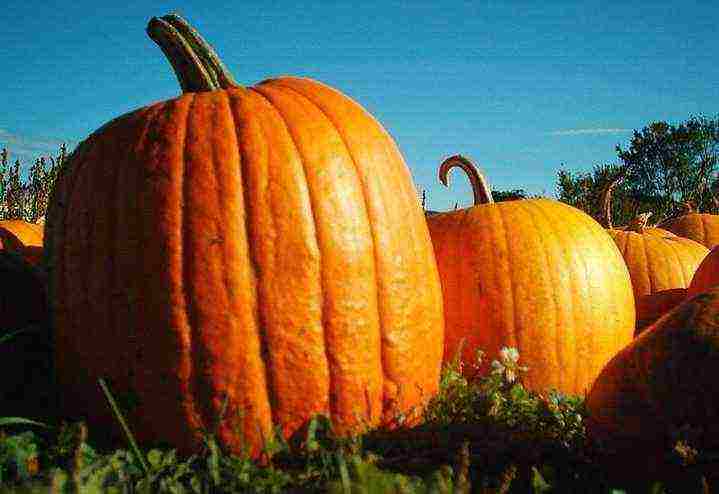
Pumpkin variety Mirani Di Chioggia
There is and gymnospermous pumpkin... As the name suggests, the seeds of this variety do not have a shell, so they are very good to use in confectionery, and just for food. The fruits are mid-ripening, fairly resistant to rot during storage. The pulp is not very sweet, but it is quite good for food.
This variety is quite capricious, the seeds often rot and do not germinate well, since they do not have a protective peel. Therefore, it is better to grow such plants from seedlings. The area for gymnosperms should be set aside from pumpkins of a different variety, since cross-pollination gives disappointing results. This vegetable also does not welcome moisture and drought. Getting a crop of this species is not an easy task, even for a pumpkin breeding connoisseur.
Variety Spaghetti also an unusual look. The pulp of this vegetable, when cooked, breaks down into fibers that resemble vermicelli; hence the name. The variety is early ripening, the first pumpkins will be ready by the end of August. The fruits are similar in color and shape to the melon, are small in size (about 1 kg), which makes harvesting and transportation easy. The pulp is not juicy, but sweet, with a vanilla aroma.
Arina - It is a light gray or white pumpkin of a rounded shape with a smooth or slightly segmented surface. The pulp is sweet in taste, dense, yellow in color. The vegetable is well stored, high-yielding, resistant to many diseases characteristic of a vegetable. The peculiarity of the variety is the seeds, rich in oil. They can be used in traditional medicine.
As you can see, pumpkin is a very diverse horticultural crop with a wide variety of qualities in different species. Among the variety of varieties, any gardener will pick up something to taste. But whichever species you choose, remember to follow the agrotechnics required for the variety. The pumpkin is a very grateful plant that will repay a little care with a good harvest!
Pumpkin is rightfully considered one of the most delicious and healthy vegetable crops. Moreover, it tastes equally good both fresh and boiled, fried and baked. The composition of the pumpkin contains a large amount of substances and vitamins necessary for the human body, so it should grow on the site of every gardener.They love pumpkin in different regions of Russia, and this gives a reason to take into account the climatic features of each area. The volume of the crop that the farmer can count on depends on the growing conditions.
The best varieties of pumpkin for open ground
Siberia and the Urals
Siberia is a very special territory characterized by extremely long frosts. Frosts in this area continue until the first month of summer. This important factor must be taken into account when choosing a vegetable variety. The main qualities of the planting material for Siberia are frost resistance. Several varieties of pumpkin are ideal for these parameters.
Smile
Pumpkin variety Smile
The peculiarity of Smile is that this variety is not only cold-resistant, but also high-yielding. In addition, it is characterized by a short ripening period - after the sprouting of the first shoots, it takes only three months until the pumpkin can be eaten. At the exit, the farmer receives medium-sized (from half a kilogram to two kilograms) orange fruits with dense and sweet pulp. Pumpkin Smile can be stored until January - however, it is unlikely that it will "live" right up to winter - it is too tasty.
Pumpkin Seeds Smile
Initially, the Smile variety was bred as an ornamental variety, and it corresponds to its purpose. On the site, the plant looks spectacular - large leaves with an outstanding pattern, large bright flowers and an intoxicating aroma. And the fruits are a real work of art. A lot of them immediately appear in the garden - up to fifteen pieces. With proper care, the Smile variety gives up to three kilograms of fruit from one bush.
Pumpkin Smile - early ripening variety
Freckle
Pumpkin variety "Freckle" refers to early ripe pumpkins
The "Vesnushka" variety is also well suited for Siberia and the Urals. Three-kilogram fruits ripen quite quickly and differ in their characteristic appearance - the green peel is "diluted" with light spots. The pumpkin flesh is soft, juicy, tender and has a delicate pear flavor. Among other advantages of this variety, there is a high yield, subject to abundant watering and long-term storage at room temperature.
Pumpkin variety "Freckle"
Russian woman
Pumpkin Rossiyanka also belongs to cold-resistant, as well as early-maturing varieties. The ripening period is about three months. The fruits of the Russian woman are quite large - from two to four kilograms. At the same time, with proper care, up to twenty kilograms of fruit are obtained from one bush - impressive results. The pumpkin grows bright and tasty - delicate sweet pulp with a melon aroma.
Pumpkin "Rossiyanka" - early ripe pumpkin, climbing, lying, tasty, versatile
Farmers advise sowing the crop in April so that it can be planted in the ground in May-June. In this case, you can fertilize the soil with organic fertilizers, then the harvest will be richer. If you want to store the pumpkin for a long time, then provide suitable conditions for this - dry air and a room that is well ventilated.
Pumpkin seeds "Rossiyanka"
Moscow region and the Middle Strip
For these areas, there are also pumpkin varieties that thrive best in these climatic conditions.
Therapeutic
Healing pumpkin. Description of the variety
A characteristic feature of this pumpkin in its shape is a little flattened, it is always easily recognizable among other fruits. Farmers highly value the Healing pumpkin for its excellent taste, rich smell, bright color, as well as for its practical quality - early ripening (about three months). Outwardly, the pumpkin is easy to recognize not only by its specific shape, but also by the gray-green color of the peel with a unique pattern.
Healing
Another excellent early-ripening variety is Healing pumpkin, which, like other "brethren", has excellent taste. Oval orange fruits without a pattern have a juicy flesh. The mass of one fruit is from 2.5 to 3 kilograms. The pumpkin can be easily stored without loss of taste for up to 6 months.
Healing pumpkin
If you want to harvest in August, then this pumpkin variety should be planted in June. It is important to choose a well-drained soil and preferably a sunny location. This pumpkin loves water, so don't skimp on watering. Experts advise to mulch the holes with peat, which will prevent rapid evaporation of water.
Sweet pie
Pumpkin "Sweet Pie"
A variety with a tasty name refers to early ripening, that is, it will take about 3 months for fruits, the average weight of which is from 2 to 3 kilograms, to ripen. Among the features of pumpkin are crispy and very tasty pulp, which is excellent for preservation. Farmers love this variety for its high and stable yield, but for this you need to provide it with proper care: regular watering, feeding, loosening and weeding. It is ideal to sow a sweet cake in such conditions when the soil reaches a temperature of 12 degrees.
Candied fruit
Candied fruit is a variety that is characterized by high yields and quick ripening (from 112 to 118 days). The fruits will be large enough - about 2 kilograms, so you need to sow seeds with this calculation. The flesh of the candied pumpkin variety is very tasty - juicy, crunchy and aromatic.
Large-fruited pumpkin "Candied"
Farmers recommend planting candied fruits on sandy loam and easily, loamy soil, since it is on this soil that the variety gives the richest harvest. After planting, you need to wait for the first shoots and remove weak plants, and the remaining ones should be watered abundantly, weeded, pinched and fed.
Premiere
If you are looking for a versatile pumpkin, then Premiere is the perfect option. Add to this the early maturity of the variety and the high yield, and you will no longer look for other pumpkin varieties. As a result, farmers receive large, smooth fruits with a high content of sugar, carotene and dry matter.
Pumpkin Premiere
It is necessary to sow seeds at a time when the threat of frost has completely passed, that is, not earlier than the end of May - beginning of June. In order to end up with large fruits and ripen quickly, you need to leave from 2 to 4 fruits on one bush. The premiere is kept well enough.
Gribovskaya winter
Pumpkin "Gribovskaya" winter large-fruited
Unlike other varieties described above, Gribovskaya Zimnaya belongs to the late-ripening varieties - the ripening period for fruits is from 128 to 140 days. However, at the same time, the plant is quite fruitful. The mass of one pumpkin is from 3 to 7 kg. Other advantages include good transportability and long-term storage.
Gribovskaya bush 189
Gribovskaya bush 189
This pumpkin variety is known for its unusual egg-shaped fruit. Ripe pumpkin has a light orange hue, ornately decorated with greenish patterns. The fruit tastes very tasty - sweet and juicy, as well as large enough - about 5 kilograms. They are characterized by high transportability and good keeping quality.
Experienced farmers assure that you need to sow the seeds of the variety in late May - early June.
Pumpkin Gribovskaya Bush 189
Dachnaya
The dacha variety is rightfully considered one of the earliest ripening varieties - already 70 days after germination there will be the first harvest. The fruits are oval or ovoid, and in color they are yellow and only the stripes have a dark green tint. This pumpkin is very sweet and juicy. The average weight of one fruit is about 3 kg.
Pumpkin Country
Among the main advantages of the variety, farmers note its high yield, early maturity, as well as resistance to cold weather. To get a good result, you need to sow the pumpkin only when the ground warms up to at least 10 degrees. It is very important to water, weed and huddle the plant in a timely manner.
Northwest
Bush orange
The Kustovaya Orange variety has a very modest size. This is an early maturing plant that bears bright large fruits weighing about 4 kilograms.The pumpkin pulp is very tasty: juicy and sweet, and also has a high carotene content. The pumpkin bark is also delicious - sweet and crunchy.
Orange bush pumpkin
Among the advantages of the variety, one can note its early maturity and versatility, since the Bush orange pumpkin is used both fresh and baked, stewed and fried.
Trojand
The Troyanda variety is excellent for growing in the middle lane - in such climatic conditions, the plant gives a fairly rich harvest. The fruits on the bushes are large (up to 7 kilograms) and tasty. The most important advantage of the Troyanda variety is its disease resistance. Plus, the pumpkin can be stored for a long time.
Chit
Pumpkin variety Crumb
This variety was bred a long time ago - at the beginning of the 21st century. This is one of the few varieties that is completely "understandable" for farmers, since no unpleasant surprises can be expected from it. It is reliably known that the size of the fruits will be very modest and hardly exceed three kilograms in weight.
Outwardly, it is a rounded flat pumpkin of light gray or almost white color. It is very tasty, juicy, soft, bright yellow. Differs in a high content of sugars and solids.
Acorn
This variety has another name, which is more common among the people - "acorn". The plant deserved it due to the external similarity of the fruits to acorns, of course, in different proportions. The pumpkin pulp has an orange-yellow pulp and a very pleasant sweet taste.
Acorn
As for the color of the peel, the options can be different: from green to orange. Sometimes these shades are bizarrely combined with each other.
Pumpkin Acorn in the garden - photo
Obviously, there is a wide variety of pumpkin varieties that are suitable for outdoor use. Study the features of the local climate and, depending on this criterion, choose the plant that is guaranteed to take root in your area.
Video - The best pumpkin varieties for open ground
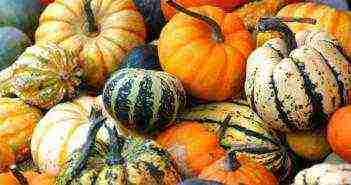
Many gardeners have long been planting such a healthy and tasty vegetable crop as pumpkin. It is consumed fresh, baked and boiled. The reason for this demand lies in the large amount of vitamins and excellent taste. Despite the fact that this culture grows in different regions of Russia, it is necessary to know which varieties will give the maximum yield under different climatic conditions.
How pumpkin is grown in the open field is indicated in the article.
For Siberia and the Urals
The Urals and Siberia are the territory of Russia, where frosts last until mid-June. Taking this into account, it is necessary to choose planting material that can withstand cold and frost.
Smile
The variety allows you to get the harvest ahead of time. Collecting pumpkin can take place within 3 months from the moment of germination. This plant grows as a bush, is compact in size and allows you to get a high yield.
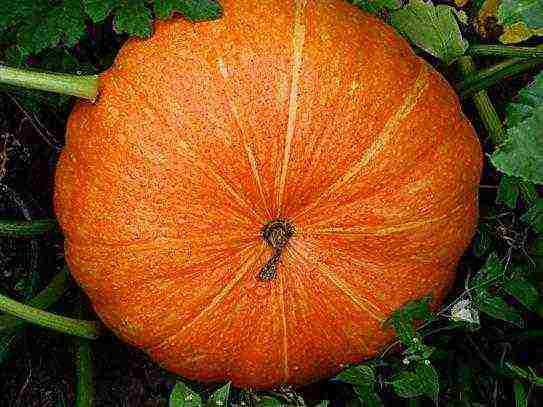
With proper care, you can get 3 kg of pumpkin from one bush. The fruit has a thick orange peel. The pulp tastes sweet and juicy. The Smile variety has a long shelf life at room temperature.
Freckle
The variety tolerates sudden temperature fluctuations, therefore it is considered the most suitable for growing in Siberia. The fruits have a hard bark, and the pulp tastes like a melon. This variety is considered sweet, the flesh is crispy, and the mass of one fruit is not more than 3 kg.

Russian woman
This culture is also great for planting in Siberia and the Urals. With proper care, you can get high yields.
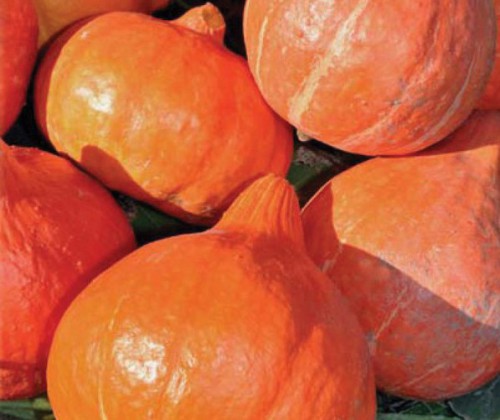
The plant has a strong immunity to all pests and diseases. For a Russian woman, cold and frost are not terrible. Ripe fruits are dark orange in color, and taste like a melon.
For the Moscow region and the Middle Strip
Despite the fact that experienced gardeners successfully grow foreign and southern pumpkin varieties, it is best to use domestic varieties that are zoned for central Russia and the Moscow region.
Therapeutic
The variety belongs to the early maturing. Harvesting can be done 90 days after germination. The plant is of small height, the fruits have a flattened shape, the weight of one is 3-5 kg.
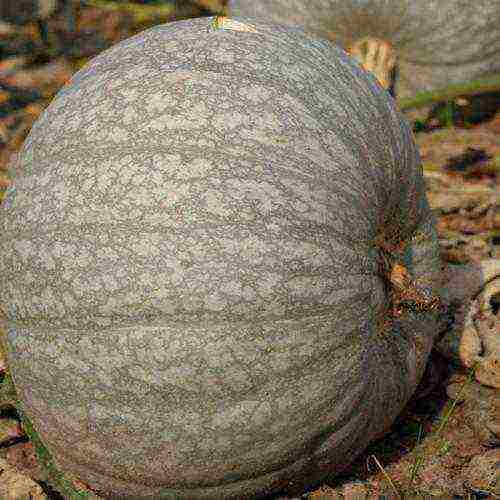
The rind is thin and the flesh is very juicy and crunchy. When stored for a long time, the pumpkin retains its presentation.
Healing
The fruit is early ripe, able to withstand drought and cold. The first fruits ripen on day 94. The culture is medium-sized. The shape of the pumpkin is flat-round.

The mass of one is 2.5-3 kg. The vegetable has an orange peel, no pattern. The core is orange, medium thickness, dense, juicy. When storing pumpkin for six months, taste remains unchanged.
Sweet pie
The variety is characterized by its high yield and early ripeness. Pumpkin is presented in orange-red color scheme, rounded shape and smooth surface. The weight of one product is 2-3 kg. The heart has excellent taste, juicy and sweet.
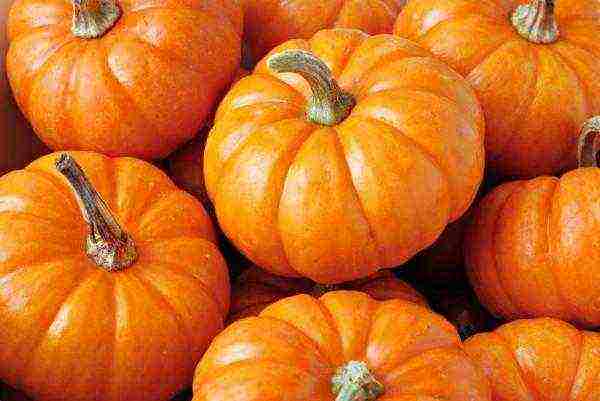
Candied fruit
The variety is accompanied by high fruiting and early ripening. The fruits are flat-round in shape. The mass of one pumpkin is 5 kg. The pulp has a yellow-orange color. It contains a large amount of carotene and sugar.
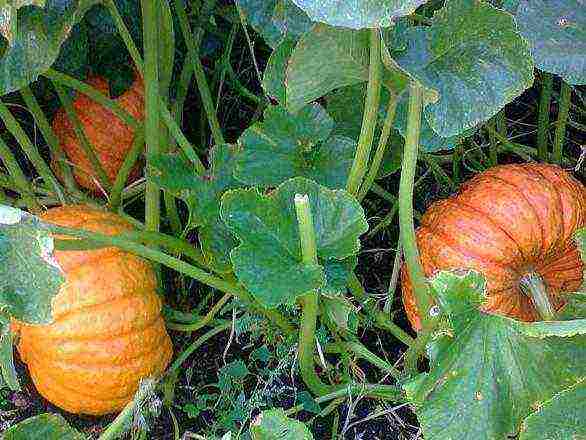
Premiere
The culture bears excellent fruit in cold conditions. Fruit ripeness is average. Already on day 115, harvesting can be done. The culture is long-looped. The fruits are presented in a flattened form. The color is dark green, there is a coarse mesh.

The pulp is presented in a bright orange color. Its thickness is 3-5 cm, dense consistency. Fruits are high in sugars. The culture develops well when planting seeds in open areas. On one plant 2 fruits ripen, the weight of which is 5-6 kg. When storing pumpkin for six months, all taste remains unchanged.
What fruitful tomatoes for open ground are best used. can be found in the article.
How large low-growing tomatoes look for open ground can be seen in the description of the article.
All reviews about super early varieties of tomatoes for open ground can be found in the article here:
What are the best varieties of tomato seeds for open ground to use, indicated in the article.
Gribovskaya winter
Late ripening variety. Harvesting is observed on day 128. Fruits have a flattened shape, gray color, no pattern. The mass of one pumpkin is 3-4 kg. The flesh is thick, its color is bright orange. Grow such a plant through seedlings. You can store the fruits until the new harvest.
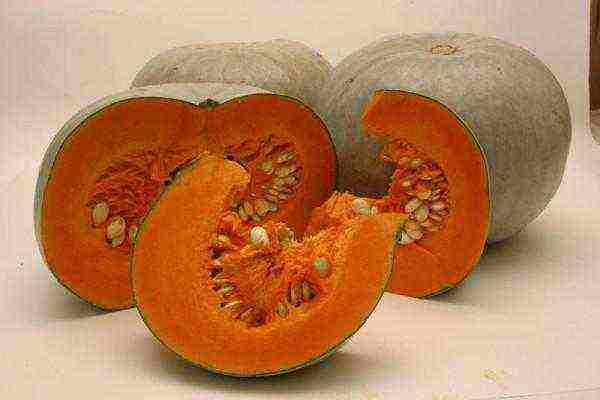
Freckle
The variety is able to resist the cold. Harvesting takes place 80 days after germination. This culture is characterized by marble leaves and dark blotches on the fruits. The plant develops as a bush. One bush can have 4-5 fruits.

The mass of one can reach 1.8-3 kg. The pulp has a sweet taste, crunchy, and its thickness is 3 cm. Fruit ripening occurs quickly and evenly. The product can be used for food immediately after collection.
Gribovskaya bush 189
Early ripening variety. Harvesting begins on day 80-98. The size of the culture is compact. The vegetable has an obovate shape, the color is yellow, there are stripes of dark green color. Fruit weight 2-5 kg.
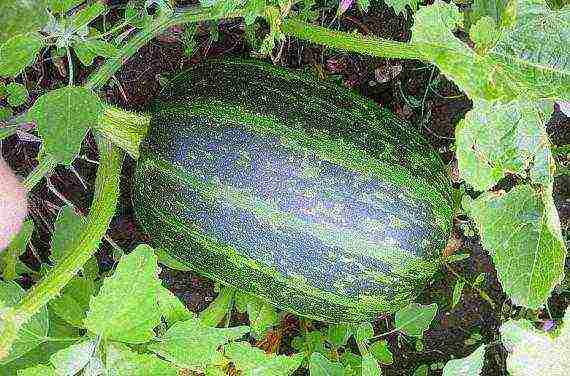
The core has excellent taste. You can store the pumpkin until December, since the taste remains unchanged.
Dachnaya
Early ripening variety. You can harvest the crop for 80-90 days. The culture grows with a bush, the size of which is compact. The fruits are presented in the form of an oval.
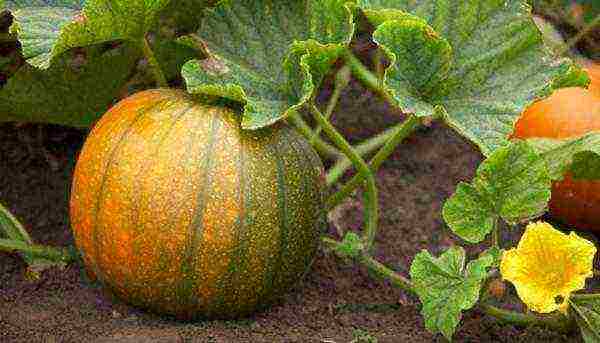
The surface of the pumpkin is smooth, the ripe fruit has a yellow color, and its weight is 2-4 kg. The pulp is yellow, has a dense texture, the taste resembles vanilla.The palatability is preserved for 4 months of storage.
For the northwest
If you are going to grow a pumpkin in the north-west of Russia, then you should choose the following pumpkin varieties:
- Bush orange... Early ripening variety. The fruits are presented in the form of a ball, have a bright orange color. Pumpkin weight reaches 4-5 kg. The pulp is yellow and contains a large amount of sugars and dry matter. The main advantage of this variety is its high yield and early maturity.
- In the northwest, an excellent option would be to use varieties such as Troyanda and Prikornevaya... They have a quick ripening period, high yields. The fruits are all 4.5 - 7 kg. The core has excellent taste and is presented in an orange-yellow color scheme. The varieties are resistant to common diseases. Fruits retain their taste and presentation for a long period of storage.
- Bush... This variety is in great demand among gardeners and gardeners. It is characterized by small fruits. Ripens early. The plant develops in the form of a bush. Fruit weight 1.5-2 kg, have a yellow-green color. The pulp is yellow, juicy and tasty.
The video shows the best varieties of pumpkin for open ground:
High in sugar
If you want to enjoy delicious and sweet pumpkin, then you need to know which varieties will allow you to get such a harvest. Sweet pumpkin is actively used in baked food or in the preparation of sweet cereals for children.
Chit
The variety is early maturing. Harvesting can take place 90-100 days after the formation of the first shoots. Fruits are small in size, weighing 2-3 kg.
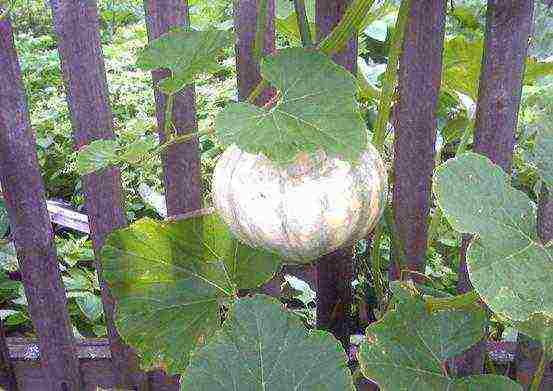
Their shape is rounded, slightly flattened, and has a light gray color. The pulp has a sweet taste, sleepy, dense consistency, bright yellow color. Even during long-term storage, the product retains excellent taste.
Atlant
The characteristic feature of this variety is the formation of large fruits. The weight of one product is 20-50 kg. Despite such a large size, the pumpkin has a juicy, dense and sweet flesh of yellow-orange color.
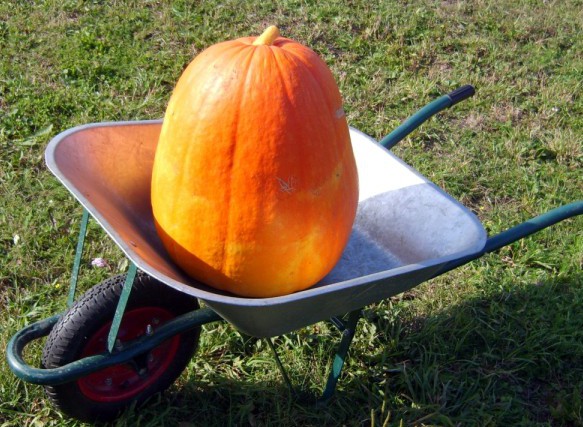
The surface of the fruit is slightly segmented and smooth. Late ripening variety. Harvesting takes place at 110-130 days.
Big Max
A late ripening variety with a high yield. It is necessary to grow seedlings in April. Harvesting can take place on day 130. The mass of one pumpkin is 40 kg. The pulp is orange in color, juicy and sweet.

Almond
This variety is characterized by an orange-yellow flesh. The taste is at the highest level. A plant with proper care allows you to get a high yield. The mass of one pumpkin reaches 4-7 kg. Harvesting can take place 115-120 days. Retains its appearance and taste for a long time.
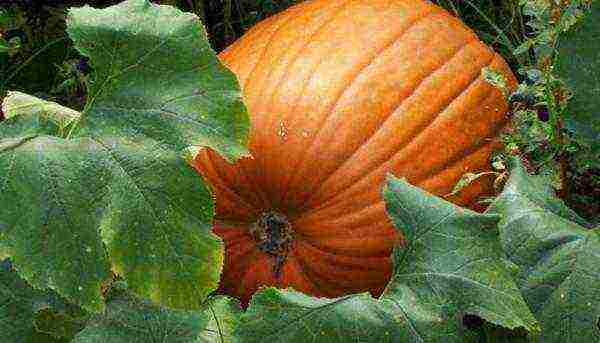
Volga gray
The variety is characterized by an early ripening period. With proper care, you can get a high yield. The pumpkin has a light gray color and a slight greenish tint. In fruits, the shape is slightly flattened. The pulp is represented by an egg-yellow color, the taste is sweet, juicy and dense in consistency.

The plant has strong immunity to diseases such as white rot. For a long time it retains its taste and presentation.
Reviews
- Milan: “I really love pumpkin, I actively use it baked. I decided to buy a sweet variety Kroshka. This culture is active to bear fruit. The fruits are also large. When caring for the plant, I did not use any treatment preparations, but at the same time, no signs of the disease were noticed for the entire season. I keep the fruits in the freezer and cut them into slices. "
- Tatyana: “I live in the northern part of Russia, so when choosing a variety, I pay attention to its cold resistance. I have great confidence in the Dachnaya variety.This crop can be planted between other plants. No special care required. One has only to water, fertilize and process pests on time. The fruit is medium in size, sweet and has a long shelf life. I have a ripe pumpkin in the garage until spring. "
- Maryana: “I grow the Healing variety at my dacha. This crop attracted my attention because it has an early ripening period. I harvest within 3 months after germination. When sowing, I use seeds. In terms of care, the plant is unpretentious. The main thing is to provide abundant watering, as the pumpkin loves moisture very much. "
Thanks to such a wide variety of varieties, every gardener can easily and quickly find a suitable product for growing in his garden. When choosing a variety, you must take into account not only your personal preferences, but also zoning, care rules and requirements for the soil.
